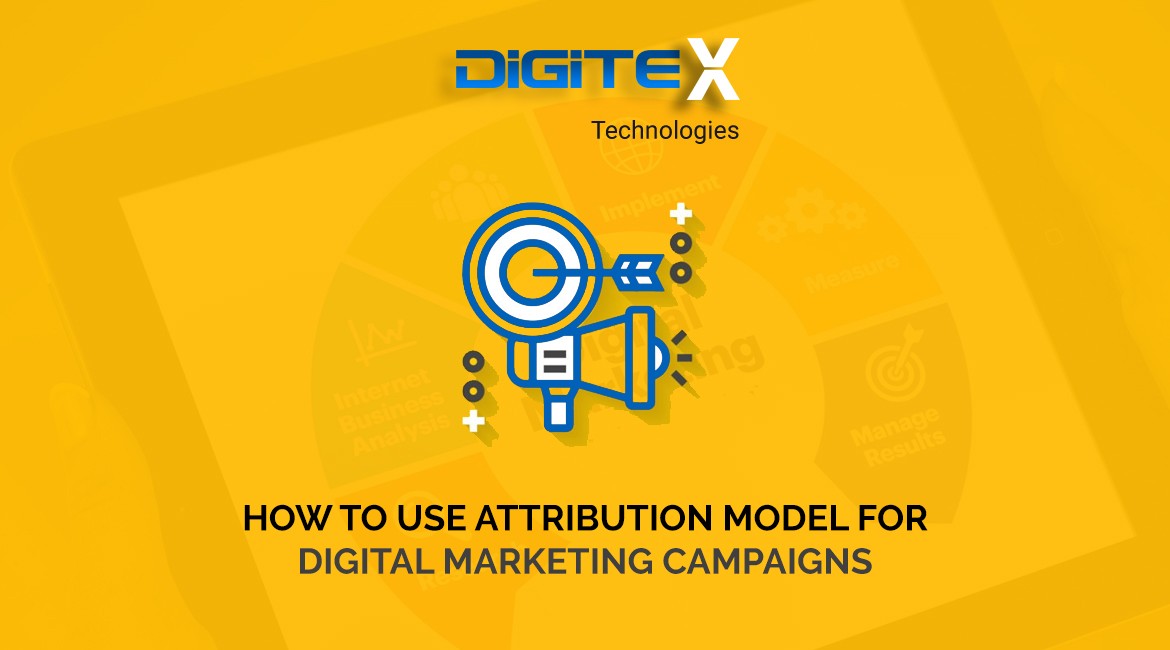In the world of the most advanced 21st century, it is important to look at the online habits people grow with time. It is the best benefits for a business if a detailed user review can be seen by checking proper statistics. Today’s world is full of unlimited number of online users who love to explore new things. The purpose may be different but it can’t be denied that the audience number is huge.
This is the key source to make your business see the light of success online. To make your digital marketing campaign successful, you must utilise the high number of resources. That’s why the importance is significant to observe user behaviour.
A right tool or a great business model or checking analytics can be a great help here.
Here comes the robust contribution of using proper attribution model for your digital marketing campaigns. It is the answer.
Here in this article, you will have a fair idea about attribution modeling and it’s universal relationship with the digital marketing campaign.
What Is Digital Marketing Attribution
To say it in short, digital marketing attribution model is the analytical principle to check which marketing strategies are converting into conversions and sales.
Now here is the explanation.
To have a deep look at how the sales are happening you must notice what path consumers choose to purchase the product or service. With the help of attribution model, you can evaluate the consumer’s purchase ways again and again. The ultimate aim is to check which message or which channel created the maximum impact to convince the customers for the purchase, convert or take the next final step. Lift studies, multi-touch attribution, time decay and more attribution models are there in the market today. The customer insights provided by these tools show how, when and where the customer responds with the brand messages. This gives the marketing team a big help to setup perfect digital marketing campaigns to meet the different desires for individual customers. It improves the ROI (Return On Investment) as well.
Today’s advanced marketing attribution needs the marketing team to normalize customer data by taking care of every interaction measured properly. This will allow you to see on which special message the customer reacts.
Almost every top lead generation companies use the proper attribution model to look for the success formula. To make the attribution model 100% effective, the marketing teams require advanced analytics manifesto to extract big data from the individual level insights. This can be used for in-campaign optimisations.
Here is an example – A customer sees an ad and email campaign. But he or she decides to press the “confirm purchase” button after a special part in the promotional email campaign. The marketer team will take note of that special promotional display and will use it in the further digital marketing campaign to serve the customer’s needs separately.
Get The Idea About Attribution Model In Digital Marketing
User-level statistical analysis is the key and the marketing attribution model gives value to the campaigns via the analysis. This is quite similar to models like marketing mix modeling. It uses the aggregated data. The person-focused approach is the main reason why the attribution model is more effective in digital marketing campaigns rather than offline marketing advertisements.
Every attribution model depends on separate analytical techniques.
Single-touch attribution and multi-touch attribution models are the major two types of attribution models used worldwide.
1. Single Touch Attribution
The practical use of single-touch attribution is getting lesser every day across all over the world. Because it is unable to provide variations of looks to the entire customer journey. Single touchpoint conversion rate is attributed here (first or last message engagement with customers). Last click model is an example of it. It attributes to the last incident of the conversion a customer clicks to purchase. It is not accurate because it doesn’t provide the customer’s entire journey and the touchpoints engaged.
There are two ways of single-touch attribution.
First Touch Attribution – This attribution always assumes and concludes that the customer makes the purchase after the first ad. Therefore it emphasises highly to the first touchpoint and gives the full attribution to it. The other touchpoints get neglected subsequently.
Last Touch Attribution – As same as the first touch attribution, the last touch attribution assumes that the conversion happens only because of the last ad seen by the customers. It gives the full attribution to the last touchpoint whereas the rest of the touchpoints stay neglected as well.
Today, digital marketing campaigns must avoid using single-touch attribution model because it doesn’t provide detailed customer data with the whole customer journey.
2. Multi-Touch Attribution
Multi-touch attribution checks every aspect and that is why it shows accurate data always. It shows all of the touchpoints the customer engaged before clicking the purchase button. It provides value to all the channels separately. It shows which touchpoints have the highest weight and which are the same.
Attribution models of maximum effectiveness always provide information of,
- The customer was exposed to which message on what channel
- Which touchpoints created the highest impact on their decision to purchase
- The contribution played by brand perception to the final decision
- What role message sequencing plays
- Which messaging brings the best results from customers
- How external factors impact the decision
This model is classified into four major subcategories.
Linear – The linear attribution takes note of each and every engaged touchpoint by the customer, leading to make the purchase happen. It gives equal weighs to every conversation happen, it gives credit to every message the equal amount that led the customers to press the “confirm purchase” button.
U-Shaped – It is very different than the linear contribution. It gives credit to other engagements separately. The attribution model believes that there are other side factors exist that have created the impact to make the purchase happen. Where the most percentage of credit goes to the highest engaged touchpoint. But it divides credit of a few percent to other touchpoints engaged between the first and lead transformation as well as conversion.
Time Decay – The time decay attribution model is different than the two other mentioned attribution models. It gives different weights to the different touchpoints engaged on the way to purchase. This model gives highest weighs to the touchpoints that are nearer to the conversion. It gives less weighs to the touchpoints engaged earlier. It assumes the closer touchpoints engaged to the conversion had a greater effect on the purchase.
W-Shaped – This is almost equal to the U-Shaped model and uses the same idea as well. It adds one more significant touchpoint – the opportunity stage. In case of the W-Shaped attribution model – the first touch, opportunity creation and lead conversion touchpoints each receive 30 percent credit. The rest 10 percent is divided between the additional engagements.
Attribution Model Benefits For Digital Marketing
The attribution models get advanced with time by compiling all sets of data. This makes it highly complex as there are variety of data, information embeds. However, if attribution modeling is done properly then it provides multiple benefits to the digital marketing service.
Marketing Spend Gets Optimised
The attribution model provides the best marketing insights of where the touchpoints engagement is high. It clearly shows the stats that the marketing dollars are best worth it if it spends in the right touchpoints. This gives the marketing team to set the best value budget accordingly.
Increased ROI
Proper digital marketing attribution gives license to the marketers to reach the right customer with the right message at the right time – as a result, the ROI (Return On Investment) gets improved.
Improved Customisation
The marketing team can use the attribution data to determine which messages and which channels are preferred by the customers to purchase. This data will be used further for multiple successful digital marketing campaigns by having a look at the entire customer journey.
Effective Product Development
User-level attribution gives marketers customer insights to understand the requirements of the customers. The insight can be used again to update the product to target specific functionality of the customer’s needs.
Optimise The Performance Of Creative
The attribution models determine the creative elements of the marketing campaign. This helps them to sharpen the messaging by updating it and when to use it to perform communication with the users.
Marketing Attribution Mistakes You Should Never Do
There is no doubt that marketing attribution model can give multiple benefits. It is mandatory to make your digital marketing campaign successful. While on the other hand there are multiple types of mistakes exist and these are pretty common. The mistakes can hamper the marketing attribute operation and obstacles the digital marketing campaign success.
Here the mistakes you should never do in the marketing attribution model.
Dependable Co Relation Incidents
When you take a look at the customer journey, you may think that one incident causes the other that ultimately redirected the customer to make the purchase. While this thing is not true always.
In-Market Purchase
It refers that the customer may have already been in the market and purchase the service or product anytime. It is of the high chance that the customer may not have seen the ad. Purchasing will just be a matter of time. However, it is possible that the marketing attribution model converts the customer to purchase it quicker.
Cheap Inventory
It is highly possible that the customer purchased it because the cheap lower-cost media played a big role behind it and the customer didn’t see the ad. This is harmful to digital marketing services. It can manipulate the messages to a greater extent by not giving the proper information to the customers. The ROI tends to get extensively hampered with it.
Digital Signaling Bias
This happens when the digital marketer doesn’t factorise the online activity related to the offline data. The marketer must consider both the online and offline data to ensure how the purchase happened. Considering only the online activity will do no good to determine the real reason of purchase.
Behavior Of The Brand
A relationship between customer behaviour and brand perception is a notable factor. Attribution models tend to overlook the relationship very often. Digital marketers must make sure that conversion happens by detecting the brand initiative from the customer side. This will increase brand value.
If marketers don’t understand how the marketing attribution models measure the brand perception then it will devalue the brand with time.
Missing Message
Messaging is a significant medium on which customers see your business ad. When observing the entire customer journey, only focusing on the effective one message becoming the key to make the purchase happen. These happen to avoid the smaller messages that may have targeted, inspired the smaller number of audience.
That is why individual user-level analytics require to clear the cutter.
Picking The Suitable Attribution Model For Your Business
At first, the marketers need to consider multiple things of which attribution model will be effective for the successful digital marketing campaign. The area must be taken into consideration.
Consider the sales cycle, how long it runs, online & offline activity, if e-commerce sites will be a factor or not.
Ultimately it will be you and your digital marketers that will take all the factors consider well to implement the best attribution model for the digital marketing campaign. Common attribution mistakes can happen earlier but make sure to spend enough time to know the reason what causing it.
The Multi-touch attribution model is your best option to make your business run like a horse in the near future. Try applying the different methods for the best results.
It’s time to prepare your carriages to run fast!
Best Of Luck!




